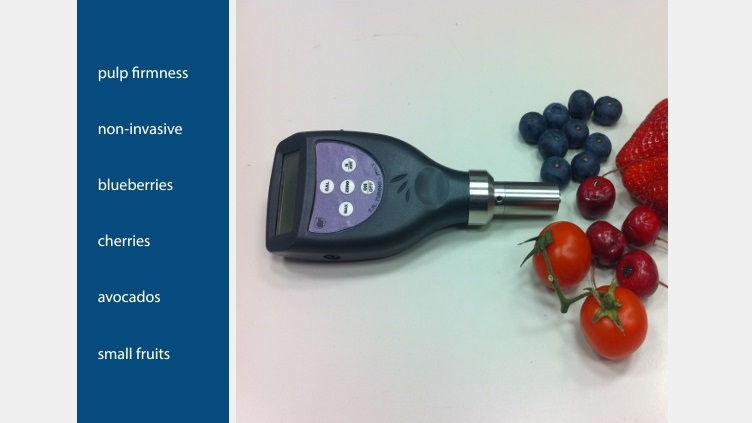Measurements
The DA METER, non-destructive fruit ripeness tester for all the food chain
TR TURONI participated in Interpoma 2012; one of the exhibited instruments was the DA Meter, non destructive fruit ripeness tester. In fruit and vegetables establishing the optimal harvest time is a crucial issue, since fruit shelf-life potential and quality are closely related to the ripening stage at harvest. The DA Meter is a very promising tool both for practical and scientific applications, since it allows to monitor on-tree fruit ripening (as well
30 November, -0001
TR TURONI participated in Interpoma 2012; one of the exhibited instruments was the DA Meter, non destructive fruit ripeness tester. In fruit and vegetables establishing the optimal harvest time is a crucial issue, since fruit shelf-life potential and quality are closely related to the ripening stage at harvest. The DA Meter is a very promising tool both for practical and scientific applications, since it allows to monitor on-tree fruit ripening (as well on the same fruit), to establish accurately the optimal harvest time and it can be used in cool store to establish maturity changes as well. The DA-Meter -developed by Prof. Costas team from the University of Bologna- is an instrument that, by means of its absorbency properties, allows to measure the chlorophyll's content in a fruit. The content in chlorophyll in a fruit is a precise index of a fruit's ripening state. Thus, the DA-meter allows to know the ripeness state, and the way it works does not depends on the seasons weather conditions, a factor which influences other kind of measurement such as the brix index. The DA index, measured with the DA-meter, is useful at many stages in the production and consumption's cycle of fruit. As a matter of fact, it can be used: 1) by the farmer, in order to optimize the trees' pruning, to obtain a very homogeneous product and, as a result, to reduce the number of picking stages; 2) by the farmer, during the harvest-time, in order to identify the best moment for the picking, and to select samples for the distribution at the staff picking up the fruit; 3) in the cold rooms, in order to know the maturation state of the stored fruit and to know, at any time, what is the shelf life that the product is supposed to have; 4) at the retailer, in order to buy products at the intended maturation level; 5) at the retailer, in order to select the most ripened product for selling.









